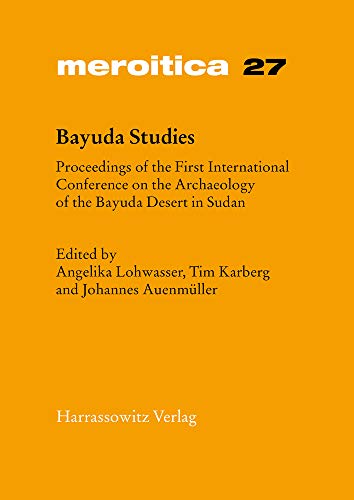
Bayuda Studies: Proceedings of the First International Conference on the Archaeology of the Bayuda Desert in Sudan PDF
538 Pages·2018·6.9958 MB·other
Most books are stored in the elastic cloud where traffic is expensive. For this reason, we have a limit on daily download.
Preview Bayuda Studies: Proceedings of the First International Conference on the Archaeology of the Bayuda Desert in Sudan
Description:
The Bayuda is the vast arid region south of the large S-bend of the Nile in Sudan. Although being a desert, several valleys - the largest amongst them the Wadi Abu Dom and the Wadi Muqqadam - collect the seasonal rainfall and enable limited habitation. Human occupation of the Bayuda began in the Palaeolithic and continues until today. However, it is still quite sparse due to the unfavourable environmental conditions. Nevertheless, this region and its archaeological evidence need to be studied for reconstructing life in the past and incorporated into the interpretive framework of the cultural history of the Sudan. The first "Archaeological Bayuda Conference" was held from 10 to 12 September 2015 at Munster University, Germany. The proceedings of this event present the current state of archaeological and cultural-historical research on the region. This book is, therefore, the first comprehensive collection of archaeological research on the Bayuda. Part I is devoted to the results of the initial 'Wadi Abu Dom Itinerary' survey project, which ran from 2009 to 2016. In part II, further substantial research in and about the Bayuda is published, adumbrating as well as highlighting the high archaeological potential of this region. As the conference aimed at engaging in an interdisciplinary dialogue, these proceedings want to showcase the current state of research about the Bayuda, while also attempting to define research questions for future explorations.
See more
The list of books you might like
Most books are stored in the elastic cloud where traffic is expensive. For this reason, we have a limit on daily download.
